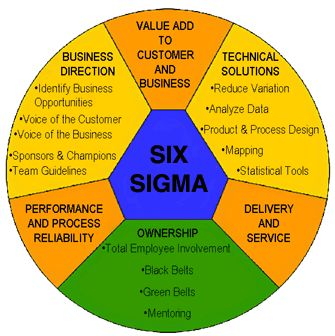Characteristics of Six Sigma
Before we begin to understand the characteristics of Six Sigma we first understand the aim of six sigma methodology.
Primarily Six Sigma aims at improving the efficiency of business processes by reducing the number of defects. The aim is to achieve near-perfect processes wherein the number of defects does not exceed 3.4 per million opportunities that exist for such defects to occur under normal circumstances. Six Sigma concepts can be implemented in all types of organizations, whether it is proprietorship having a few simple processes or a large corporation having hundreds of complex business operations.

However, it is critical to understand the full potential of Six Sigma implementations, Some of the key characteristics of Six Sigma that organizations need to understand before actually executing Six Sigma implementation projects are –
- Leadership support and commitment:Success of any Six Sigma project implementation depends a lot on the level of support that is provided by the top management to Six Sigma teams who are made responsible to handle implementations. Here the support and commitment of the team is is required in the form of time, effort and resources, which are vital for the success of any quality improvement programme undertaken by an organization. Clearly the leadership cannot afford to have a laid-back attitude during the process of implementation of Six Sigma in the organization.
- Data-Driven Approach: The concept of Six Sigma if implemented successfully could help in reducing defects and improving efficiency. Since Six Sigma quality improvement techniques are based on sound reasoning and make use of statistical tools to obtain accurate results. Primarily, the data-driven approach aims to reduce the dependence on human experience that at times prove disastrous, specifically while handling complex business processes having multiple sub processes.
- Training and Cultural Change: the third and most important characteristics of six sigma is to improve quality which involves providing the requisite training to employees so that they are able to carry out the implementations far more effectively. As we all know that appropriate training is necessary for all types of personnel associated with the implementation projects, whether it a senior position or a fourth class employee dealing with routine tasks. Also, Six Sigma also stresses making employees aware about the changes that are bound to happen after the implementations.
The above stated characteristics are the core competencies of any Six Sigma implementation project and should be strictly adhered to for ensuring the success of the implementations. In which case non-compliance with any of the characteristics reduces the effectiveness of the implementations and can even lead to redundancies that can prove very costly for the organization.

